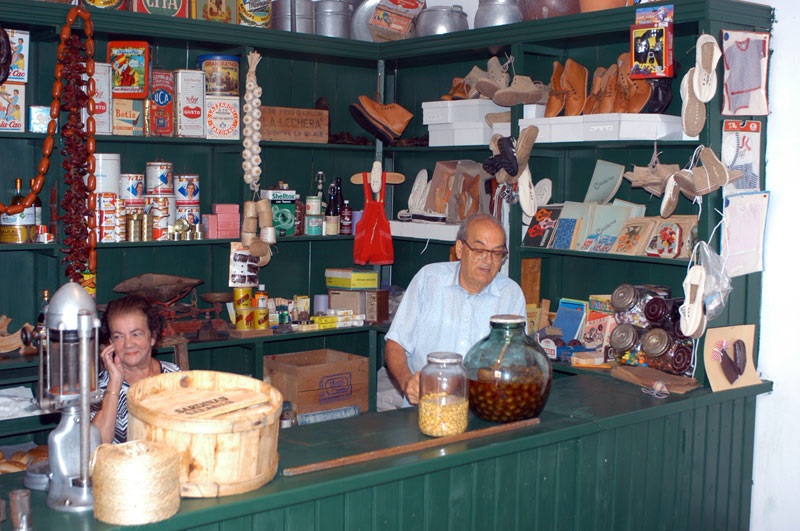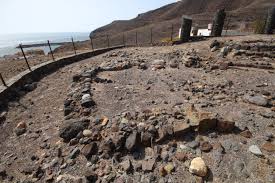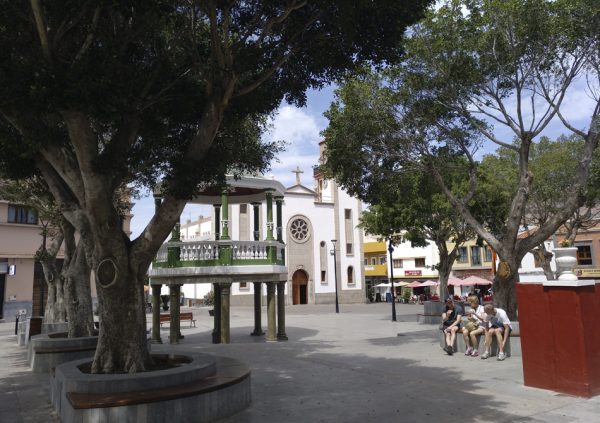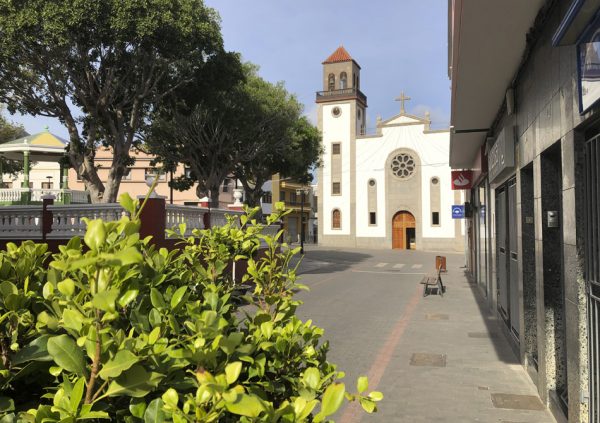Sites of Cultural Interest
La Aldea de San Nicolás is aware of the importance and relevance of its great cultural heritage. This is highlighted through a brief overview of the main places of interest, featuring among others, its architectural, ethnographic and ecclesiastic heritage, in the knowledge that it plays an important role in the region’s promotion and social integration.
The preservation and recuperation of the larger part of our tangible and intangible material heritage has the clear aim of further boosting development in our town, keeping alive the interest the locals have in their own culture.
It goes without saying that cultural heritage is one of the main reasons why travellers visit new places, learning about other ways of life, culture, artistic manifestations, etc.
La Aldea de San Nicolás has a Municipal Heritage and Intangible Material Commission, responsible for ensuring that the essence of our culture is kept alive. It is a type of culture that cannot be touched, it can only be felt through the experience it offers.
This type of intangible heritage includes folklore, the interaction between people, and above all our popular fiestas, one of which is the Festividad de El Charco, unique in the Canaries.

Architectural Heritage
Town Centre
The town centre of the municipality of La Aldea de San Nicolás starts at La Plaza de La Alameda and runs along Calle Real, to La Placeta.
La Plaza is right at the heart of the town, and sprang up around the middle of the 18th century. All the town’s most important historic events are held here. The church is its hub, and is surrounded by houses built between the 18th and 19th centuries, opening up to Camino Real which widens as a street as far as La Placeta, the site for 20th century buildings opened as shops, businesses, schools, cafeterias, library and printers, refreshment stalls and banks… La Calle Real then grew wider from the start of the 20th century. Going upwards along its left hand side are houses built in the 19th century. Several Live Museums are marked out along this side, all of them opened as part of the Community Development Project of La Aldea.
La Alameda
The first piece of architecture can be traced back to 1926 on a plot of land acquired by the town in 1914. In 1935 the Quiosco de la Música, or bandstand, was added. It was knocked down in 1966 to be replaced by a new building, which has been modified over the years to its current structure. The main meeting place for townsfolk is between the church and La Plaza, a place for strolling around, music, concerts, night parties and the site for the most important events to celebrate the town’s history.
New upgrading work has recently been carried out here, including the pedetrianisation of the through road, plus the building of a replica of the former Quiosco de La Música bandstand.
The Parish Church
Building on this fine temple was finished in 1972, on the plot previously occupied by the hermitage, which had been extended in 1700 and knocked down in 1961. Its construction is of Canary neo-functionalist style from the mid 20th century, featuring certain traditional architectural elements: tiled towers, oculus and rose windows, etc…
La Casa del Balcón
This is a house built next to the former Casa Parroquial, or parish house, around 1824, which features traditional architectural elements in its recesses, on its roof and especially on its balcony which gives it its name. At the turn of the 20th century it was the site for the Pensión de las Narcisas, the first in the town. Alongside is the Casa Parroquial built at the end of the 1960s.
La Calle Real was widened between 1920 and 1950 at the corner of calle Matías Vega in the Cercado del Curato.
The Town Hall
The initial work followed plans by master designer Simeón Rodríguez, Pancho Rosales, using blocks of pressed rusticated concrete, at the start of the 1930s. La Aldea has had a constitutional Town Hall since 1812 and before this with a royal mayor, deputies and other municipal representatives.
Municipal Cultural Centre (New Cinema)
This is the most important architectural construction in La Aldea, dating from the middle of the 20th century, built in a rationalist and functionalist style. It has 700 seats and was an emblematic work and social meeting place as well as one of the island’s leading cinemas when opened on 18th March 1959. As well as a cinema it was used as the theatre and was the site for a wide range of cultural events.
The building was acquired by the Town Hall. Today it is used as the Municipal Cultural Centre, with a capacity for 475 people, and continues to be the venue for the municipality’s leading cultural activities.
La Sociedad – Cultural and Recreational Centre (1928)
This building was founded in 1928 as a cultural and recreational centre in San Nicolás. It became the social hub and meeting point in the town until the end of the 20th century (with readings, dances, conferences…) Alongside this building was the former football stadium.
Ecclesiastical Heritage
Church, Church Cemetery, Municipal Cemetery, Tasarte Cemetery, La Cruz del Siglo, La Cruz de María, Las Cruces.
Ethnographic Heritage

Live Museum Network
This network constitutes one of the most novel and enriching museum experiences for visitors to enjoy. It includes, among others, La Gañanía, School, Tomato Warehouse, Oil and Vinegar Shop, Gofio Cornmeal Mill, Shoeshop, Barber Shop, Rural Medicine Shop, Music and Pottery Centre, where youngsters and adults from the Canaries can enjoy a day out full of traditions, including milking, ploughing, threshing, kneading, cheese making, live displays of the town’s age-old craft traditions, visiting a traditional school, the tomato warehouse, the old oil and vinegar shop, etc.
All this has been possible thanks to the involvement of the town’s senior citizens in all the different activities, completely free of charge: their philosophy is that everyone should have access to culture and that it should be free.
More information at La Aldea Community Cultural Development Project
Sites of Cultural Interest
Los Caserones

The indigenous settlement known as Los Caserones is one of the largest on the island and was awarded the status of Site of Cultural Interest on 7th February, 1986. The houses were circular or oval on the outside and cross-shaped on the inside, with thick stone walls.
Once the carbon 14 dating method had been used to determine its age, it was calculated the settlement dated from between 60 AD and 810 AD, which correspond to the beginnings and later abandonment of the settlement
Today there are still a few remnants of stone houses together with some burial tombs that are visible, very near to the beach and to the edge of the ravine bed where water once flowed.
The settlement is complemented by a necropolis, featuring a peculiar type of architecture, comprising semicircles set around a central tower. The layout of the burial mounds reveals the existence of social hierarchy, in which males occupied places of greater relevance.
The burial mound at Lomo de Caserones has been fenced off and prepared for the visit of local residents and tourists. Lomo de Caserones is a collective burial site made up of six individual sepulchres in stone graves. The whole ensemble is set out around a main grave which occupies the highest part of the settlement; this tomb houses the body of an adult male, and the ground around it is paved. All around are the remaining graves which contained four women and a baby of just a few months. This layout has been interpretted as revealing a certain social hierarchy, perhaps where parents have been buried alongside their offspring.
The only dating available indicates this ensemble was in operation between the 13th and 15th centuries (1220-1390 AD).
The skeletons on display are reproductions, used for educational purposes.
El Charco
 El Charco de La Aldea is a lake located on the western edge of Gran Canaria, in the munipality of La Aldea de San Nicolás, alongside the mouth of Barranco de La Aldea, the town’s ravine.
El Charco de La Aldea is a lake located on the western edge of Gran Canaria, in the munipality of La Aldea de San Nicolás, alongside the mouth of Barranco de La Aldea, the town’s ravine.
This mouth constitutes a kind of sunken estuary, due to different movements by the vertical axis of the island of Gran Canaria, which underwent a diverse series of marine regressions and transgressions over a period of several million years.
The different geomorphological alterations that occurred between the Final Pleistocene period and the Holocene period led to the formation of a great coastal lake which was situated nearly half a kilometre inland.
The formation of El Charco constituted what is popularly known as “marciega”, literally “blind sea”, produced by the flooding and subsequent land-filling by water from the sea, together with other water running into it from the ravine in periods of heavy rainfall.
What is now known as El Charco is a small lake that is at the heart of the mouth of the Barranco de La Aldea, just a few metres from the sea and an overflow into it, separated only by a mound of sea pebbles. The normal depth of El Charco does not usually exceed 1.50 metres and the lake bed is made up of sedimentary deposits and pebbles dragged in by the ravine.
In terms of their ethnographic and historic relevance, El Charco and the popular fiesta linked to the region constitute a throwback to pre-Hispanic cultural practices, specifically the fishing technique known as “embarbascado”. This technique consisted of pouring the natural rubber from certain plants, such as the cardon or tabaiba, into the water, which produced a sedative effect on the fish, thus making their capture simpler. This fishing technique continued to be practiced in different regions of Gran Canaria through to the first half of the 20th century, as recorded by different historic sources, such as J. Viera y Clavijo, V. Grau-Bassas, etc. This seems to be the origin of the local fiesta here, dating from pre-Hispanic times, which led to this pagan celebration. Not surprisingly, the area around El Charco is home to one of the largest pre-Hispanic settlements on the island, which came to light during the 19th century with the presence of over 800 constructions (houses, burial mounds, cattle pens, etc.) at the site today known as Los Caserones.
The development of the “embarbascado” fishing technique incorporated a festive and symbolic component which is materialised in the traditional celebration of the fiesta of El Charco en La Aldea de San Nicolás, within the context of its patron saint festivals, emerging as one of the most traditional and significant elements in Gran Canaria, combined with other material and immaterial heritage elements.
The oldest documentary sources that make reference to this celebration come from Bishop Delgado y Venegas in 1766 who, following his visit to the town prohibited, under the threat of excommunication and a fine, “any women from entering the lake when the embarbascado is under way, nor at any other time in the company of men, while men, under the same threat of punishment, may not do so fully naked and for this excursion in front of women,”. This text also makes reference to the celebratory nature of this practice.
On 11th September every year local residents congregate around El Charco to commemorate the fiesta’s content, without actually re-enacting the embarbascado technique. On this day, this enclave becomes a collective reference point for the residents of La Aldea, bringing together large numbers of people from the local region and the rest of the island. Currently, as part of the fiesta celebrations, the outer perimeter of El Charco is marked out with lime which may not be crossed until, at five o’clock in the afternoon, the mayor sets off a rocket as a signal. At this moment, the participants dive into the water, some of whom are carrying baskets or “guelderas”, a kind of long fishing rod, to catch a type of fish called “lisas” that live in El Charco, commemorating the origin of the fiesta. Those who go into the water attempt to encourage onlookers standing around the edge to come into the lake, in a fun and festive atmosphere.
Undoubtedly, El Charco represents a unique symbol of heritage, bringing together in a single place highly important and deep-rooted historic and ethnologic values, both material and immaterial, which go far beyond the municipal borders.
Contact
If you would like to contact us, please use the contact details below.
- La Aldea Visitor Centre and Tourism Office
Calle Paseo El Muelle, 140. 35470 La Aldea de San Nicolás
- 928.89.03.78 y 682.22.58.98
- turismo@aytolaaldea.com



